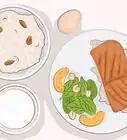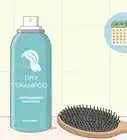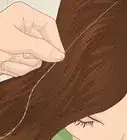wikiHow is a “wiki,” similar to Wikipedia, which means that many of our articles are co-written by multiple authors. To create this article, 13 people, some anonymous, worked to edit and improve it over time.
This article has been viewed 361,197 times.
Learn more...
Humidity can wreak havoc on your hair if you let it. Luckily, even a small change in your hair care routine can tame puffy hair; specially-made products as well as home remedies round out the attack. If you don't want to settle with puffy, lawless hair on a humid day, you should be able to help matters.
Steps
Everyday Hair Care in Humid Environments
-
1Get the right cut. If you live in an area that is known for humid weather, consider getting a haircut that caters to your hair type. Long hair and straight cuts add the weight needed to pull down hair that would otherwise puff out. An angled or slightly layered cut will remove some of the bulk. A layered cut will emphasize curls, but could result in puffier hair.
-
2Shampoo at most every other day. Shampoo is great for cleaning dirt and grime away from hair, but it's not so great at taming puffy hair. That's because shampoo strips your hair of its natural oils, which make your hair silken and combat frizz.
- Some people go for as long as a week in between shampooing. The exact amount of time is up to you, but the consensus is that waiting a couple days between washes produces healthier, less puffy hair.
Advertisement -
3When conditioning after shampoo, wash off conditioner using cold water. There's some debate about how effective this is, but the idea is pretty simple: cold water causes the cuticles of the hair to contract, simultaneously adding shine and taming frizz.[1] Some scientists, however, doubt the effectiveness of cold water on the scalp, saying that since hair cuticles aren't living cells, they shouldn't contract.[2] The debate aside, this advice shouldn't cause puffy hair, so try it out and see if it works.
- As discussed below, certain specially-designed leave-in conditioners can help fight puffy hair.
-
4Dry hair gently. If your hair is prone to fly-aways and frizzes, carefully blot your hair dry with the towel instead of rubbing. Allow hair to air-dry as much as possible to reduce the amount of puffiness in your hair.
- If you blow your hair dry, avoid a lot of movement with the blow dryer. Blow your hair dry slowly and in small sections on the lowest heat setting.
- Remember to blow down the shaft of hair instead of across it, which separates hair sections, or upward, which provides volume and lift but also adds puffiness to frizzy hair.
- Keep in mind that blow drying removes moisture from the hair strands, which increases frizz.
-
5Avoid over-combing your hair. It can be tempting to smooth out your hair with plenty of brushstrokes after stepping out of the shower. But brushing or combing your hair causes friction, which causes heat and breakage to the hair cuticle.[3] This leads to puffy or frizzy hair. Instead of combing your hair like you've entered a contest, use a wide-toothed comb or a paddle brush with ball-tipped ends. Finish off with a light pass using your fingers as a comb.
-
6Decide on a style for the day that works with your natural hair type. In humid weather, you hair will tend to do what it naturally wants to do. Fighting your hair type will probably cause you a lot of frustration; chances are you'll end up losing every time. If your hair is straight, avoid the urge to put it in curlers on humid days. If your hair is naturally curly or wavy, work with the waves instead of opting for a straight style.
- Try tying your hair up in a bun or ponytail and finish off by applying some anti-frizz gel.
- If you're having a truly tremendous hair day, never underestimate the help a hat or well-tied scarf can do for your hair.
Choosing the Right Products for Your Hair
-
1Choose a shampoo designed to fight frizz or puffiness. Shampoos are made to cater to hair types. You may come across some brands on the shelf that declare right on the face of the bottle that the product will reduce frizzy hair. Otherwise, look for the words "moisturizing," "smoothing" or "hydrating" on the bottle of your favorite brand.
-
2Choose the right kind of conditioner. Normal or leave-in — it all depends on what's in the conditioner. When searching for a conditioner, look for conditioners that have one or both of the following ingredients: amino silicones and cationic surfactants. These two ingredients help fight the two main causes of puffiness: damage in the hair shaft and static electricity.
- Amino silicones help the silicones in conditioner to grab onto damaged hair shafts, providing more lasting conditioning.
- Cationic surfactants help cut down on puffiness causes by static electricity by carrying a positive charge.
-
3Use a smoothing hair product. Smoothing serums coat the hair shaft, helping to reduce frizz much like conditioners will. Some of these products, however, are heavy and can weigh your hair down too much. Use sparingly until you discover the right amount of the product to use for your hair.
-
4Apply a styling product. While serums are great for smoothing the hair sections, they do not offer a holding agent to prevent the sections from separating. Use a smoothing gel or a lightweight gel to hold the hair in place.
Preventing Puffiness with Home Remedies
-
1Try a deep-treatment of olive or coconut oil. Occasional deep treatments help keep frizz and puffiness under control by maintaining healthy hair. Apply a healthy spoonful or two of warm olive or coconut oil to your ends. Wrap the hair up in plastic or a shower cap and wait anywhere from 30 minutes to several hours. Shampoo and condition as normal to remove any excess oil.
- Be careful about where you apply the oil. Shoot for the ends of your hair, or mid-shaft. Applying oil to the roots can clog pores and result in breakouts on your scalp.
-
2Make use of leave-in oils on your hair. Leave-in oil treatments such as Argan oil (also known as Moroccan oil) and baby oil might be able to help tame your mane. Put less than you think you'll need into the palm of your hand, cover gently, and apply to your hair.
-
3Make use of other oil-rich foods such as mayonnaise or avocado. Oil-rich foods like mayonnaise or crushed avocado may be another way to strengthen your hair and prevent puffy hair, although they are both messy to apply. Mix a tablespoon of mayo into your conditioner if you want to give it a try; or crush up avocado like you're making guacamole, apply to hair and cover for 10 minutes, then wash out under warm water until your hair feels smooth.
Community Q&A
-
QuestionWhat causes puffy hair?
 Community AnswerUsually the weather. But sometimes it can be the way your hair is dried or your natural hair texture. Humidity is the top reason to why hair gets puffy or frizzy.
Community AnswerUsually the weather. But sometimes it can be the way your hair is dried or your natural hair texture. Humidity is the top reason to why hair gets puffy or frizzy. -
QuestionShould I have more keratin treatment for the new growth?
 Community AnswerYes. You definitely need another keratin for the new hair.
Community AnswerYes. You definitely need another keratin for the new hair. -
QuestionI have recently done a hair relaxing. How can I get back my curls naturally?
 Shanitra PotierCommunity AnswerYou will have to wait for all of the chemicals to grow out. Once you get a decent amount of new grow, you can chose to do "the big chop" or continue to let it grow out. Transitioning is very frustrating, but try to avoid constantly using heat to make it look presentable, because this will greatly affect your curl pattern later on. The use of protective styles is best during transitioning.
Shanitra PotierCommunity AnswerYou will have to wait for all of the chemicals to grow out. Once you get a decent amount of new grow, you can chose to do "the big chop" or continue to let it grow out. Transitioning is very frustrating, but try to avoid constantly using heat to make it look presentable, because this will greatly affect your curl pattern later on. The use of protective styles is best during transitioning.
References
About This Article
Humidity can wreak havoc on your hair, but you can tame puffy hair with a few small changes in your hair care routine. While shampoo is great for cleaning dirt and grime, it also strips your hair of natural oils, which can make it puff and frizz. To avoid this untamed look, shampoo, at most, every other day. You can also use shampoos that are moisturizing, smoothing, or hydrating to reduce frizzy hair. For conditioners, look for something with amino silicones or cationic surfactants, which prevent damage and static electricity. After washing and conditioning, dry your hair gently by blotting it with a towel. Once your hair is clean, you can use a leave-in oil, like Argan or Moroccan oil, to tame any puffiness. Another way to handle puffy hair is to put it in a bun or pony tail. On a truly bad hair day, opt for a head scarf or hat. To learn how to use coconut oil to control frizziness, keep reading!
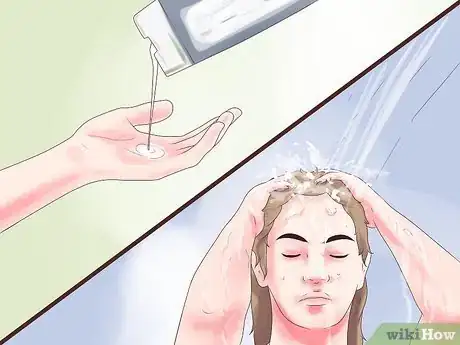




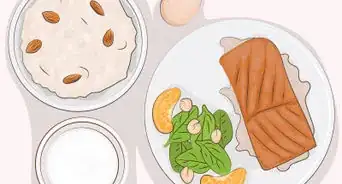
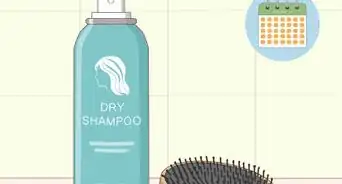
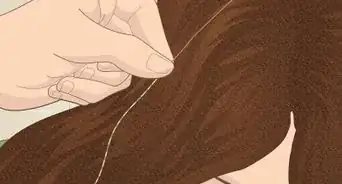
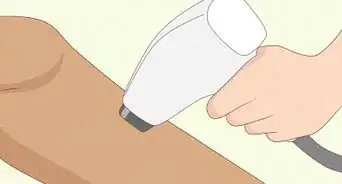
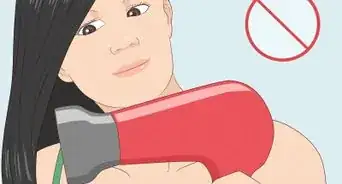
-Step-1-Version-8.webp)









